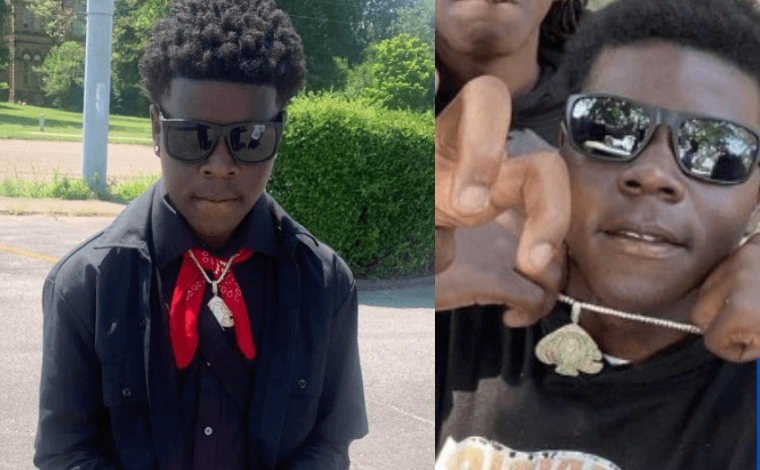Wave of Terror: Four Armed Robberies Strike Downtown Chicago in 30-Minute Nighttime Spree, Leaving Eight Victims in Wake
In a disturbing spree of violence and criminality, downtown Chicago was rocked by four armed robberies within a narrow thirty-minute window early Thursday morning. Chicago Police reported that the incidents occurred sequentially between 12:25 a.m. and 12:55 a.m., terrorizing eight citizens. In each alarming scenario, assailants employed a similar modus operandi: two robbers would pull up in a sedan, brandish firearms, and aggressively demand personal possessions from their targets.
The first of these harrowing incidents took place at around 12:25 a.m. in the 600 block of North Fairbanks Avenue. A 66-year-old woman, walking alone, became the first victim. The robbers, upon approaching her, not only threatened her with guns but also discharged their weapons, heightening the already fraught situation. The terror did not end with gunfire; one assailant physically dragged her into the street, forcing her to relinquish her belongings. Traumatized and injured, the elderly woman was subsequently admitted to Northwestern Memorial Hospital, fortunately in good condition.
Merely two minutes after the initial robbery, another assault occurred in the 700 block of South Clark Street. Here, a duo targeted a man and a woman standing on the sidewalk. Brandishing their weapons, the robbers demanded valuables. In a brave but dangerous move, the 46-year-old woman attempted to intervene, only to be struck in the head with a handgun. Despite the violent encounter, she declined medical attention at the scene, a decision reflecting either the shock of the moment or a distrust of emergency services.
At approximately 12:30 a.m., the third robbery unfolded in the 200 block of East Randolph Street. Two individuals, a 36-year-old woman and a 34-year-old woman, faced the robbers’ wrath next. In a similar pattern, the offenders emerged from a sedan and, under the threat of their guns, demanded valuables. The 36-year-old was struck in the cheek with a handgun, an act of brutality that left a visible mark of violence, though she, too, refused medical aid. Her companion, though physically unharmed, was robbed of her belongings.
The night’s final reported robbery occurred near the close of this half-hour period of chaos, around 12:55 a.m., in the 100 block of East Wacker Drive. This time, three individuals were confronted by two attackers who, consistent with earlier incidents, arrived in a car and displayed firearms to enforce their demands. A struggle ensued, resulting in minor injuries to a 28-year-old woman and a 25-year-old man, both of whom required hospitalization at Northwestern Memorial. The rapid succession and similarity of these crimes underscored a well-orchestrated wave of violence aimed at instilling fear and extracting quick gains.
These consecutive, violent encounters not only illustrate a brazen disregard for law and public safety but also highlight a growing concern over urban crime dynamics. The use of a vehicle in all instances points to a calculated strategy allowing for quick escape and the ability to strike multiple targets swiftly. This method of operation suggests a high level of premeditation and disregard for the victims’ well-being.
The impact on the local community is profound. Such incidents severely affect the sense of security among residents and can alter nighttime patterns, discourage tourism, and dampen the economic activities in a bustling part of the city like downtown Chicago. The psychological ramifications for those directly affected—and indeed the wider community—are significant, fostering an atmosphere of fear and distrust.
From a law enforcement perspective, the pattern and execution of these crimes pose both a challenge and an urgent call to action. Police must leverage surveillance technology, community intelligence, and possibly inter-agency cooperation to track down the perpetrators. Enhanced patrolling and visible police presence may serve as immediate deterrents, while long-term solutions could involve strategies aimed at addressing broader socio-economic issues that underpin such criminal behaviors.
As the city reels from this night of terror, the broader implications for urban crime prevention strategies are clear. It becomes imperative to reassess and reinforce the mechanisms of law enforcement, community engagement, and public awareness to prevent a recurrence of such distressing events. The commitment to public safety must be unwavering, with resources aptly directed to curb the rising tide of urban criminality. The residents of Chicago, and indeed all urban dwellers, deserve to feel safe in their communities—something that is fundamental to the social contract and integral to the functioning of any vibrant city.



